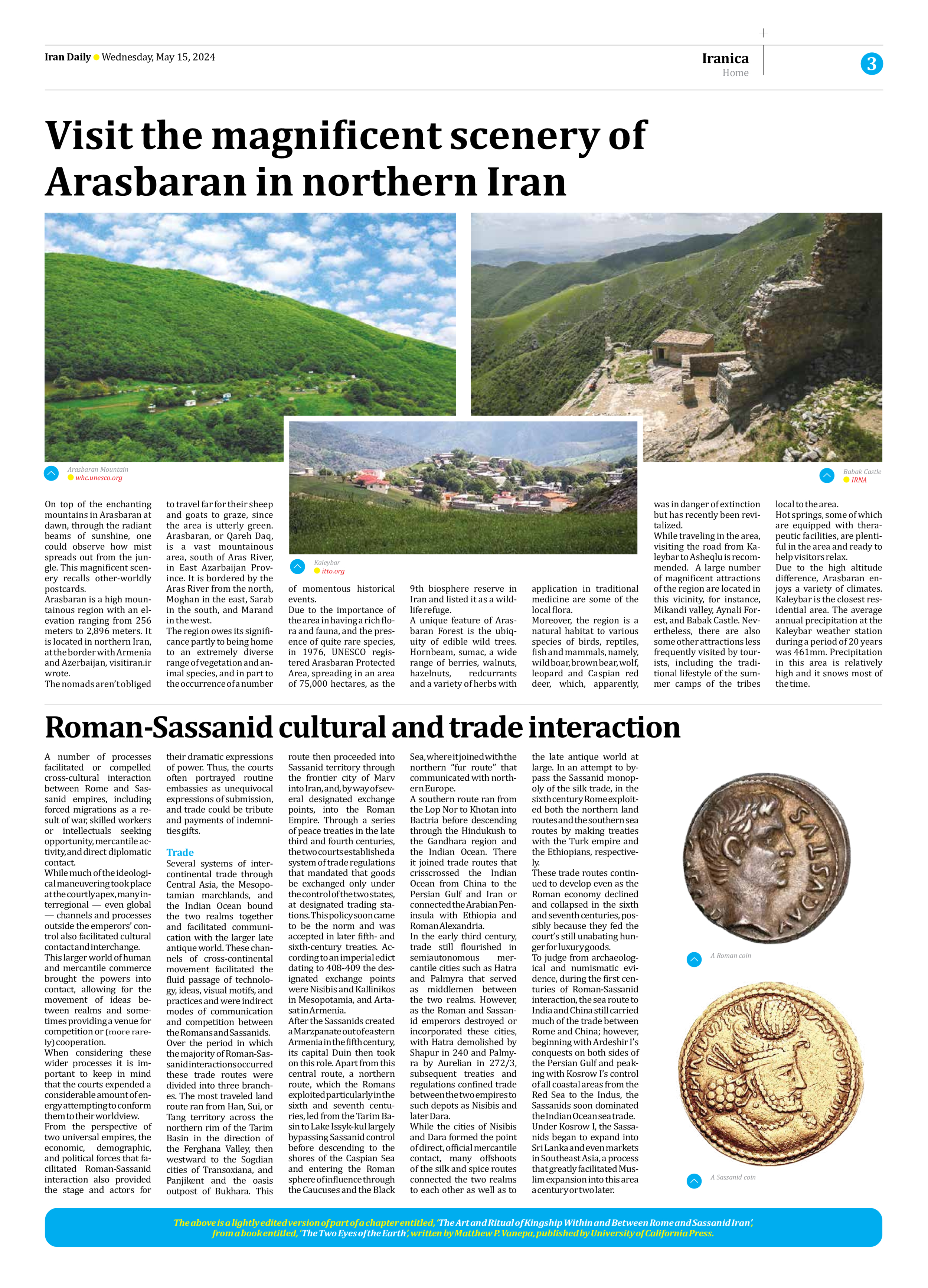
Roman-Sassanid cultural and trade interaction
A number of processes facilitated or compelled cross-cultural interaction between Rome and Sassanid empires, including forced migrations as a result of war, skilled workers or intellectuals seeking opportunity, mercantile activity, and direct diplomatic contact.
While much of the ideological maneuvering took place at the courtly apex, many interregional — even global — channels and processes outside the emperors’ control also facilitated cultural contact and interchange.
This larger world of human and mercantile commerce brought the powers into contact, allowing for the movement of ideas between realms and sometimes providing a venue for competition or (more rarely) cooperation.
When considering these wider processes it is important to keep in mind that the courts expended a considerable amount of energy attempting to conform them to their worldview.
From the perspective of two universal empires, the economic, demographic, and political forces that facilitated Roman-Sassanid interaction also provided the stage and actors for their dramatic expressions of power. Thus, the courts often portrayed routine embassies as unequivocal expressions of submission, and trade could be tribute and payments of indemnities gifts.
Trade
Several systems of intercontinental trade through Central Asia, the Mesopotamian marchlands, and the Indian Ocean bound the two realms together and facilitated communication with the larger late antique world. These channels of cross-continental movement facilitated the fluid passage of technology, ideas, visual motifs, and practices and were indirect modes of communication and competition between the Romans and Sassanids.
Over the period in which the majority of Roman-Sassanid interactions occurred these trade routes were divided into three branches. The most traveled land route ran from Han, Sui, or Tang territory across the northern rim of the Tarim Basin in the direction of the Ferghana Valley, then westward to the Sogdian cities of Transoxiana, and Panjikent and the oasis outpost of Bukhara. This route then proceeded into Sassanid territory through the frontier city of Marv into Iran, and, by way of several designated exchange points, into the Roman Empire. Through a series of peace treaties in the late third and fourth centuries, the two courts established a system of trade regulations that mandated that goods be exchanged only under the control of the two states, at designated trading stations. This policy soon came to be the norm and was accepted in later fifth- and sixth-century treaties. According to an imperial edict dating to 408-409 the designated exchange points were Nisibis and Kallinikos in Mesopotamia, and Artasat in Armenia.
After the Sassanids created a Marzpanate out of eastern Armenia in the fifth century, its capital Duin then took on this role. Apart from this central route, a northern route, which the Romans exploited particularly in the sixth and seventh centuries, led from the Tarim Basin to Lake Issyk-kul largely bypassing Sassanid control before descending to the shores of the Caspian Sea and entering the Roman sphere of influence through the Caucuses and the Black Sea, where it joined with the northern “fur route” that communicated with northern Europe.
A southern route ran from the Lop Nor to Khotan into Bactria before descending through the Hindukush to the Gandhara region and the Indian Ocean. There it joined trade routes that crisscrossed the Indian Ocean from China to the Persian Gulf and Iran or connected the Arabian Peninsula with Ethiopia and Roman Alexandria.
In the early third century, trade still flourished in semiautonomous mercantile cities such as Hatra and Palmyra that served as middlemen between the two realms. However, as the Roman and Sassanid emperors destroyed or incorporated these cities, with Hatra demolished by Shapur in 240 and Palmyra by Aurelian in 272/3, subsequent treaties and regulations confined trade between the two empires to such depots as Nisibis and later Dara.
While the cities of Nisibis and Dara formed the point of direct, official mercantile contact, many offshoots of the silk and spice routes connected the two realms to each other as well as to the late antique world at large. In an attempt to bypass the Sassanid monopoly of the silk trade, in the sixth century Rome exploited both the northern land routes and the southern sea routes by making treaties with the Turk empire and the Ethiopians, respectively.
These trade routes continued to develop even as the Roman economy declined and collapsed in the sixth and seventh centuries, possibly because they fed the court’s still unabating hunger for luxury goods.
To judge from archaeological and numismatic evidence, during the first centuries of Roman-Sassanid interaction, the sea route to India and China still carried much of the trade between Rome and China; however, beginning with Ardeshir I’s conquests on both sides of the Persian Gulf and peaking with Kosrow I’s control of all coastal areas from the Red Sea to the Indus, the Sassanids soon dominated the Indian Ocean sea trade.
Under Kosrow I, the Sassanids began to expand into Sri Lanka and even markets in Southeast Asia, a process that greatly facilitated Muslim expansion into this area a century or two later.







